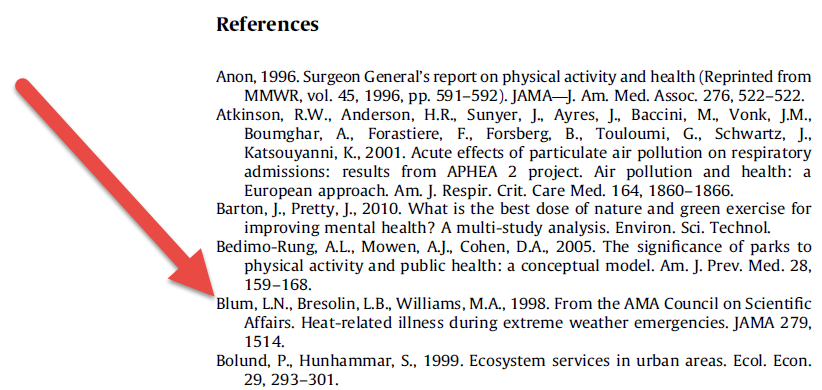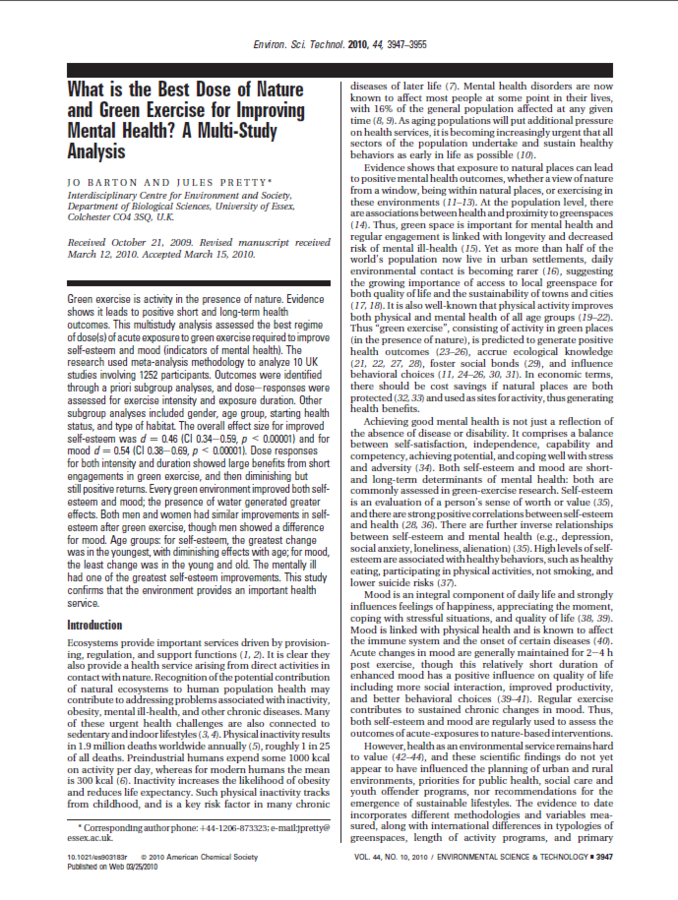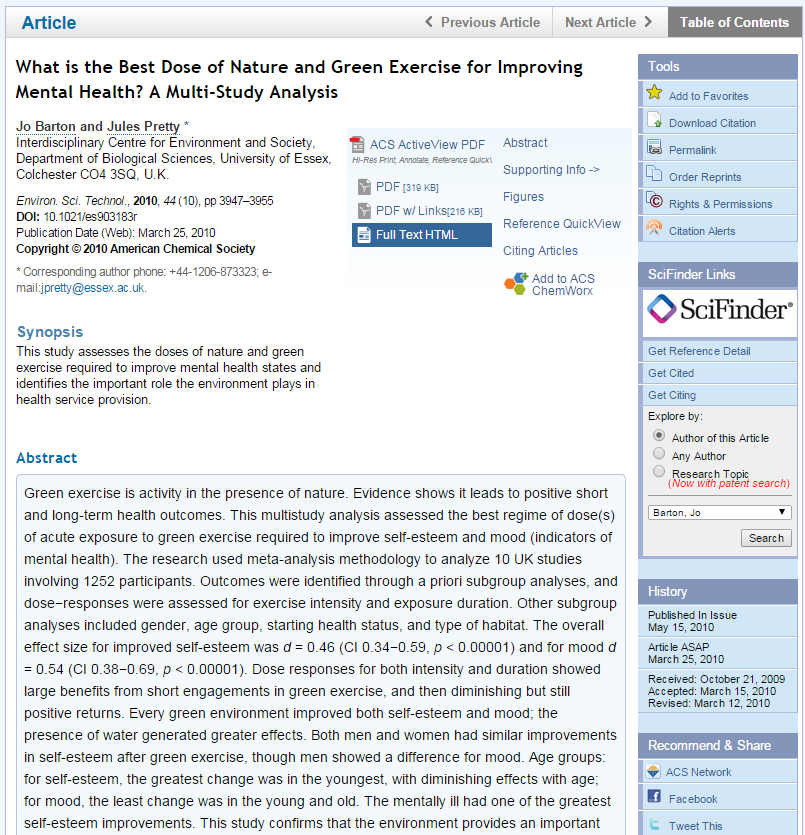Citations, APA Style, & Plagiarism
Tim Miller - tim.miller@humboldt.edu - 707.826.4959
Today
- Plagiarism & Avoiding It
-
Citations (APA)
- how to use them properly
- Properly quote & paraphrase
- Anatomy of a citation
- APA resources
- Activities and discussion
Paper Quiz
- What questions do you have?
- What do you expect to learn today?
Citation Basics
- Organization
- copy/save the citations when you find an article
- track which concepts come from which articles
- APA Styles
- more than just citations/references
- formatting- margins, line spacing, pagination, running header, title page, etc.
- Save your citations in APA format from the database
What is plagiarism?
HSU Academic Honesty Policy:
http://www.humboldt.edu/studentrights/academic_honesty.php
- copying work that isn't your own
- not giving credit for ideas or content that you got from another source
- submitting another person's work as your own
- reproducing another person's work and claiming it as your own
How do you avoid plagiarism?
-
if you use someone else's idea, give them credit
- quote: using the exact language
- paraphrase: re-wording the concept in your own words
-
don't cheat!
- only turn in work that you created yourself
Quote

The current body of research "has repeatedly shown that proximity and access to parks and outdoor recreational opportunities is positively correlated with active behaviors" (Weiss et al., 2011).
Quotation marks & citation
Weiss, C., Purciel, M., Bader, M., Quinn, J., Lovasi, G., Neckerman, K., & Rundle, A. (2011). Reconsidering Access: Park Facilities and Neighborhood Disamenities in New York City. Journal Of Urban Health, 88(2), 297-310.

Paraphrase
The current body of research shows a positive correlation between an active lifestyle and access to park and recreation areas (Weiss et al., 2011).
Citation- no quotation marks
Weiss, C., Purciel, M., Bader, M., Quinn, J., Lovasi, G., Neckerman, K., & Rundle, A. (2011). Reconsidering Access: Park Facilities and Neighborhood Disamenities in New York City. Journal Of Urban Health, 88(2), 297-310.
Quiz: Plagiarism or not?

Populations with larger percentages of poor African Americans and/or Latinos have less park space.
Plagiarism
No citation
Weiss, C., Purciel, M., Bader, M., Quinn, J., Lovasi, G., Neckerman, K., & Rundle, A. (2011). Reconsidering Access: Park Facilities and Neighborhood Disamenities in New York City. Journal Of Urban Health, 88(2), 297-310.
Quiz: Plagiarism or not?

Predominantly African American and/or Latino low-income neighborhoods have less park space (Weiss et al., 2011).
Weiss, C., Purciel, M., Bader, M., Quinn, J., Lovasi, G., Neckerman, K., & Rundle, A. (2011). Reconsidering Access: Park Facilities and Neighborhood Disamenities in New York City. Journal Of Urban Health, 88(2), 297-310.
Not Plagiarism
Citation
Quiz: Plagiarism or not?

Weiss, C., Purciel, M., Bader, M., Quinn, J., Lovasi, G., Neckerman, K., & Rundle, A. (2011). Reconsidering Access: Park Facilities and Neighborhood Disamenities in New York City. Journal Of Urban Health, 88(2), 297-310.
Weiss et al. (2011) reported that, "the greater the percentage of residents who are African American, or who are Latino, and who are poor, the lower is the amount of park acreage."
Not Plagiarism
Citation & quotation marks
Quiz: Plagiarism or not?

Weiss, C., Purciel, M., Bader, M., Quinn, J., Lovasi, G., Neckerman, K., & Rundle, A. (2011). Reconsidering Access: Park Facilities and Neighborhood Disamenities in New York City. Journal Of Urban Health, 88(2), 297-310.
In neighborhoods with larger percentages of poor African Americans and/or Latinos, the lower the amount of park acreage (Weiss et al., 2011).
Plagiarism
Not true paraphrasing
Paraphrase this:
Think about:
- key concept(s)
- what is most important?
- synonyms
- how to summarize
Weiss, C., Purciel, M., Bader, M., Quinn, J., Lovasi, G., Neckerman, K., & Rundle, A. (2011). Reconsidering Access: Park Facilities and Neighborhood Disamenities in New York City. Journal Of Urban Health, 88(2), 297-310.



There is a relationship between park acreage and the demographic make-up of the neighborhood.
Anatomy of a Citation
What is a citation?
Two pieces:
- in-text citation
- in the body of the paper
- reference list entry
- at the end of the paper





The in-text citation refers the reader to the reference list for complete citation information.
(Nel, 2005, p. 805)
Three components:
With the basic information, the reader can find the full citation at the end of the paper:
- author's name
- date of publication
- page number
- required for quotations
- strongly encouraged for paraphrasing
In-line Citation
Reference List Entry
Full citation:
With the following information, the reader should be able to find the article on her own:
- author's name
- date of publication
- article title
- journal title (italics)
- volume (italics), issue
- page number
- DOI/URL (e-articles)
Nel, A. (2005). Air pollution-related illness: Effects of particles. Science, 308(5723), 804-806.
DOI & URL
DOI - Digital Object Identifier
- unique alphanumeric code used to identify and locate an electronic article:
doi:10.1111/j.1476-4431.2012.00818.x
URL - Uniform Resource Locator
- address for a site or page on the worldwide web:
http://ezproxy.humboldt.edu/login?url=http://search.proquest.com/docview/619513094?accountid=11532
Electronic Articles
The DOI or URL is NOT required if:
- The article is published in a print journal and your copy is the same version as the printed original.
The DOI or URL IS required if:
- The article is NOT printed in a physical journal OR
- The article is NOT the same version as the printed original.
A quick note about articles you find in electronic format
Electronic Articles


Same as print
Alternate version
Do not need
DOI or URL
Need
DOI or URL
Which of these is the same as the print version?
Electronic Articles

PDF version is MORE likely to be the same as the print version
HTML version is LESS likely to be the same as the print version


PDF vs HTML versions
Do not need
DOI or URL
Need
DOI or URL
In-text Citations
- Name of the author(s)
- Publication year
- Page number, when possible
- Separated by comma (,)
Basic Info:
(Barton & Pretty, 2010, p. 3947)
- Multiple authors:
- 3-5 authors: list all names for the first citation in the paper. For the following citations, only include the main author's name followed by et al. (Latin: 'and others')
- 6 or more authors: only list the first author followed by et al. for all citations.
In-text Citations
Author Format:
(Blum et al., 1998, p. 1514).
Author Format:
(Jerrett et al., 2009)
Six or more authors:
Two authors:
(Barton & Pretty, 2010, p. 3947)
Three-Five authors:
(Brainard, Jones, Bateman & Lovett, 2002)
In-text Citations
The citation should appear in every sentence
-
Every time you mention an idea that you found in a work by another author, you must cite that author.
- Sometimes the same author is cited multiple times in one paragraph.
- For subsequent citations in the same paragraph, you can omit the year if you mention the author's name in the text. If the author's name is in parentheses, it always includes the date.
In-text Citations
When the author(s) are not mentioned in the text:
When the author(s) is mentioned in the text:
Hofferth (2009) investigated children and adolescents’ change of time spent in physical activities from 1997 to 2003 and also found that on average a child aged 6–12 spent around 3h with outdoor play, sports and other physical activities (p. 35).
Public parks and green spaces play a decisive role in defining ecological functions of urban environments (Gilbert, 1989).

everything at the end of the sentence
page # at the end of the sentence

date, in parentheses, follows author's name

In-text Citations
Long Quotations - example
For quotations of 40 words or more, place the quotation in a block, indented 1/2" & double-spaced.

1/2"
References
-
Author name(s)
- first & middle initials only
- separated by comma
- more than 7 authors- include first six and last
Publication date
Article title
Journal title
Journal volume & issue
Page numbers
Barton, J. , & Pretty, J.
a
What is the best dose of nature and green exercise for improving mental health? A multi-study analysis.
(2010).
Environmental Science & Technology,
44(10),
3947.
Components of the full citation:
References
Issue Number
Issue numbers are only included for journals that use issue pagination (the first page of each issue is page 1).
-
Most journals do NOT use issue pagination
- Omit issue number in most cases
Krupa, T. (2011, October 13). How to Determine Whether a Periodical Is Paginated by Issue, [Web log post] Retrieved from http://blog.apastyle.org/apastyle/2011/10/how-to-determine-whether-a-periodical-is-paginated-by-issue.html
When to omit issue number:
-
Compare the page range and issue number
- if it is issue #3 and the page number is 476, it is NOT using issue pagination.
-
Look at the journal table of contents
- if issue #1 ends on p. 124 and issue #2 starts on p. 125, it is NOT using issue pagination.
References
Issue Number
Krupa, T. (2011, October 13). How to Determine Whether a Periodical Is Paginated by Issue, [Web log post] Retrieved from http://blog.apastyle.org/apastyle/2011/10/how-to-determine-whether-a-periodical-is-paginated-by-issue.html
Reference List
- New page (insert page break)
- 'References' title is centered
- Double spacing
- Hanging indent - 1/2"
- Alphabetized - main author last name
References - example
1/2"
Hanging Indent


Alphabetical by primary author's last name
References - Hanging Indent
Google Docs

References - Hanging Indent
MS Word

Resources
-
Library Research Guides
- http://libguides.humboldt.edu/cite
-
HSU Library Zotero Guide
- http://libguides.humboldt.edu/zotero
-
HSU Writing Center
- http://www.humboldt.edu/learning/study_skills/writing.php
-
OWL Purdue Online Writing Lab
-
https://owl.english.purdue.edu/owl/
-
Citations
By Tim Miller
Citations
- 2,303



